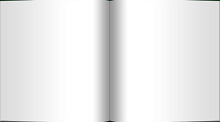|
|
| Line 146: |
Line 146: |
| | | | |
| | [[Category:Old format]] | | [[Category:Old format]] |
| | + | [[Category:Extra translation]] |
Revision as of 02:00, 4 June 2020
Las reglas del montante ("The Rules of the Montante") is a brief, anonymous Spanish notation recorded in a copy of Melchor Cano's 1563 theological text De locis theologicis, libri duocecim....[1] It currently rests in the holdings of the Biblioteca Publica del Estado in Toledo, Spain. This is one of very few sources for instructions on the use of the montante, an Iberian greatsword, and is thought to have been inscribed by a student in the during his studies.
Provenance
Contents
| —
|
Draft Translation 
by Michael Chidester
|
Transcription
by Julia Méndez Aparicio
|
Draft Translation 
by Jan Gosewinkel
|
The rules of the montante follow
- Enter with a forehand blow and a backhand blow, and then exit with another forehand blow and backhand blow and two thrusts.
- Two forehand blows and two backhand blows screening above the head, and then exit (neither more nor less) with your two thrusts, one to one side and the other to the other.
- Two forehand blows followed by a thrust, and then exit (neither more nor less).
- Three flying forehand blows, and then return with another three backhand blows.
- A forehand blow forward and a backhand blow forward, and then return (neither more nor less).
- Three forehand blows across and another three backhand blows, cutting over the head.
- Two forehand blows, and then return toward the right side with a thrust and with a backhand blow not shortened, and later two ... the same thrust.
|
Síguense las reglas del montante /
- Entrar con tajo y rebes y salir con tajo / y rebes y dos estocadas. /
- Dos tajos y dos rebeses manparando sobre la cabeça y salir ni mas ni menos con sus dos esto/cadas una a un cabo y otra a otro /
- Dos tajos i una estocada segida [sic] y salir / ni mas ni menos /
- Tres tajos bolados y bolber con otros tres rebeses. /
- Un tajo adelante i rebes adelante / i bolber ni mas ni menos /
- Tres tajos cruçando y otros tres rebeses / cortando por encima de la cabeza /
- Dos tajos y bolber por el lado derecho con una / estocada y con rebes no aparando y luego dos / (...) / la misma estocada.
|
Es folgen die Reglas des Montante /
- Trete ein mit einem Tajo und einem Reves, und dann trete zurück mit einem weiteren Tajo und einem Reves und zwei Stichen
- Zwei Tajos und zwei Reveses schirmend [Mamparando: evtl. von mampara = Wandschirm, oder von parando = Stoppen, Anhalten] über dem Kopf, und dann trete zurück (nicht mehr und nicht weniger) mit deinen zwei Stichen, einer zur einen Seite und den anderen zur Anderen.
- Zwei Tajos sogleich gefolgt von einem Stich, und dann trete zurück (nicht mehr und nicht weniger).
- Drei herumfliegende Tajos, und dann kehre um mit weiteren drei Reveses. Ein Tajo nach vorn und ein Reves nach vorn, und dann kehre um (nicht mehr und nicht weniger).
- Ein Tajo nach vorn und ein Reves nach vorn, und dann kehre um (nicht mehr und nicht weniger).
- Drei kreuzende[?] Tajos und weitere drei Reveses, über dem Kopf schneidend.
- Zwei Tajos, und kehre um zur rechten Seite mit einem Stich und einem Reves der nicht verkürzt ist, und danach ein zweiter … [Ein Teil des Textes ist hier am Seitenrand abgeschnitten] dann der gleiche Stich.
|
|
Gallery
Additional Resources
- Mendez Aparicio, Julia. "Las anotaciones manuscritas de los impresos del siglo XVI de la Biblioteca Pública del Estado en Toledo". Boletín de la Real Academia de Bellas Artes y Ciencias Históricas de Toledo, Volume 55. 2008.
References
- ↑ Mendez Aparicio, pp 31-93.
Copyright and License Summary
For further information, including transcription and translation notes, see the discussion page.

